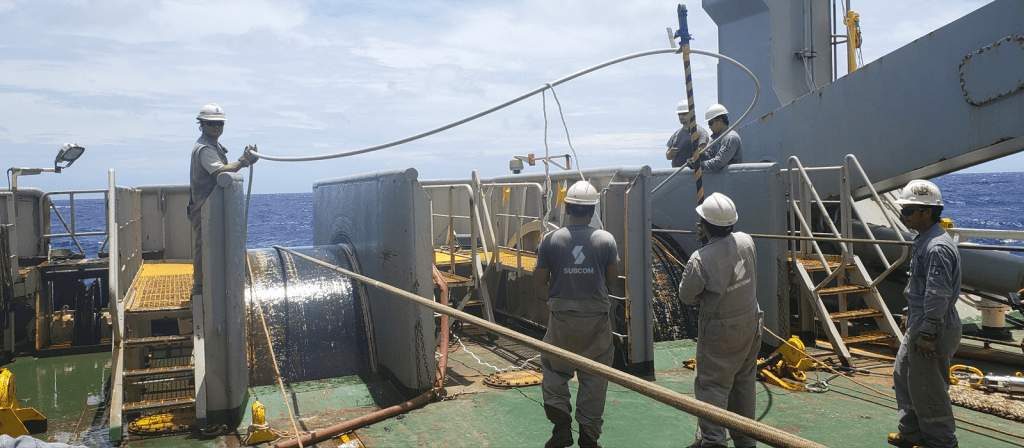
When we look back on 2020 in the future, what will we remember?
In some ways, everything changed. The COVID-19 pandemic affected millions of people around the world and forced the rest to lock down. People’s health, jobs, and families were affected. The cost was unimaginable.
But in other ways, the pandemic simply accelerated existing changes, such as the trend toward booming demands for data. From a carrier perspective, the first months of COVID-19 saw records being broken across the world’s networks. Data demands were spiking, driven by population-wide moves to remote working, use of on-demand video, and digital and cloud acceleration.
Supplying the World’s Need for Data
I’m proud to say that, as an industry, our networks stood up to the surge.
And that surge was significant. At Telstra, we saw IP transit grow by 79 percent between February and June, while use of IPVPN increased by more than a third (37%) by August. Our core subsea network has seen 20 percent year-on-year growth in international capacity use, peaking in March with a 16 percent boom over the course of a single month.
Those figures were consistent with the wider industry. TeleGeography reported the expected global Internet bandwidth growth rate had increased by eight points to 35 percent, driven by acceleration from Oceania (12%), Europe (9%), and Asia (4%).
Use of apps has seen similar exponential growth. Let’s take video conferencing, for example. Webex traffic saw significant growth in March and April, with a nine-month peaked growth rate of 79% since January.
And yet our infrastructure survived and enabled people around the globe to continue to connect with one another to live, work, and play. Today, bandwidth demands are slowly plateauing to return to the levels we would have expected before the pandemic, even taking into account the long-term trend toward growth in international capacity.
Resilience Based on Investment
So, how did the industry cope with this sudden demand?
In short, the answer is long-term investment in infrastructure. Without a clear-eyed vision that the future of world connectivity relied on greater access to higher bandwidth, we would not have been in a position to meet these demands. In the five years between 2016 and 2021, more than USD 15 billion is expected to have been invested in new subsea cables by the carrier industry.
At Telstra, we’ve prioritized creating a diverse international network for several years. Our subsea cable infrastructure now spans around 250,000 miles based on ownership of fiber pairs. And that investment continues at pace even during the pandemic, where we have increased core capacity in the global network by more than 16 percent since January.
But ensuring network resiliency can’t be achieved alone, and I’m proud that the carrier industry has come together to share best practices and support one another. Consider how streaming services have reduced resolutions to minimize data use. At Telstra, we work with seven of the top ten Forbes global digital companies and telcos will continue to be at the heart of those discussions.
Investment in Infrastructure Has to Be Supported by Parallel Investment in People
Yet that investment in infrastructure would not succeed without a similar investment in the people who support both our networks and our customers.
As our CEO Andy Penn noted, our first priority has to be protecting our people’s safety and wellbeing – practically and emotionally. Every business has a business continuity plan, even if some were a little dusty until this year. But ours has seen a lot more use and that practice really honed our plans to focus them on our people.
I think about Typhoon Mangkhut, two years ago in Hong Kong. Our plans identified critical staff who lived, worked, and slept in our operations center so that our cables stayed connected during the storm. Or even the protests in Hong Kong, when many of our staff were unable to reach our offices easily. Plans were created to ensure the right collaboration and remote working solutions were instantly available for our teams.
We’ve implemented those plans quickly in each country we work in during COVID-19 – splitting teams into two in different locations to mitigate risk and maintain availability and performance across the network.
But every crisis is unique – none more so than a pandemic.
Think about what happens if a subsea cable is damaged in a storm, for example. Normally, we have a crew of engineers on ships who are at sea for months and who sail to the problem and fix it. Yet during the pandemic lockdown, ports wouldn’t accept ships as borders were closed. We had to work with ports to deal with entry, use supply vessels to restock the ships, and book a lot of hotels to quarantine crews as they’re relieved. Those circumstances are entirely new.
Equally, we have had to lobby hard to ensure our people can do their jobs. In India, for example, network technicians had to put signs on their cars saying they were essential workers to avoid being ordered home to lock down. In Singapore, we had to apply for exemptions for our network operations center staff to be in our facilities during the circuit breaker.
It’s now critical that we begin building these examples of best practice into our business continuity plans so that we might learn and improve on our response to whatever challenges the future throws at us.
Coming Together as an Industry to Foster a Shared Sense of Purpose
The truth is these challenging circumstances have proven to everyone that telcos are essential services.
We have to remember and foster a sense of shared purpose in our work as an industry. This crisis has really underlined why we do what we do – even today, we have people from a vast range of countries dialing in to connect with one another and share insight and experience. That is impossible without our work.
The world has changed and we will need to change with it. Crises have a role in uncovering what is important in the big picture. That’s why we need to keep the purpose of our work – to connect and help people around the world – at the front of our minds as we run our networks and businesses in the future.
About Oliver Camplin-Warner
Oliver Camplin-Warner is CEO – International at Telstra, where he is responsible for the company’s wholesale and enterprise sales and service internationally. Based in Hong Kong, Oliver has nearly two decades of experience in telecommunications and technology in Australia and the United Kingdom. Oliver joined Telstra in 2012 as a Director in Telstra Operations, where he was responsible for Telstra’s Platinum business which provides in-home and remote technical support for consumers across Australia. Oliver also led Telstra’s Major Accounts customer management team, which was responsible for providing connectivity and technology solutions to enterprise, government, and non-profit customers. Oliver has two young children, and together with his wife Alisa are co-founders of the charity Finnan’s Gift. This charity was set up in memory of their late son Finnan and serves to raise awareness and much needed funds for congenital heart disease.
Join Oliver at PTC’21: New Realities in the online conference platform auditorium for his Monday panel discussion: Impact of COVID-19 and Industry Implications.






